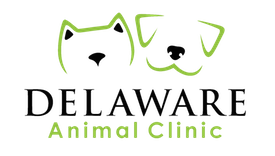
Spring has arrived and with the pleasant weather many of us will be outside working in the yard and garden. Always willings to offer “help” and provide us with company, our canine and feline friends may be right by our side – digging in the dirt or sampling the plants like a gourmet salad in a 5-star restaurant.
As pleasant as the outdoors can be during this time of year, it is not without potential safety hazards. There are a large number of plants that are potentially toxic.
The seeds, fruit and base of the Sago palm, so common in Southeast Texas, are all toxic to dogs. Vomiting often occurs within 3 hours of ingestion, followed by other signs such as abdominal pain, diarrhea and depression within 12 hours. Liver failure, coma and death may follow. In fact, once clinical signs develop, uo to 1/3 of dogs will die.
Azaleas are another abundant locally-found plant that has poisonour potential for both dogs and cats. The entire plant is toxic and ingestion of just a few leaves can cause serious problems. Signs include GI disturbances such as vomiting, diarrhea and excessive salivation, which may occur within 6 hours. Weakness, coma, low blood pressure, cardiovascular collapse and death may follow.
Cats are at risk of poisoning from multiple varieties of the lily plant. Lilies can cause sudden kidney failure withing 24-48 hours after ingestion. Without early and aggressive threatment after a cat eats a lily, the mortality rate is high. Every part of the plant is toxic. There have even been documented cases of cats developing kidney failure after exposure to only the pollen of a lily plant.
The number of poisonous plants is far too extensive to list here. The ASPCA Animal Poison Control Center has a searchable database on their website that shows both toxic and non-toxic plants, including photographs to aid in identification. This information can be found at: www.aspca.org/pet-care/poison-control/plants/
Other garden items can pose hazards to your pets. Fertilizers are good for our plants, but not so good for our four-legged family members. They can cause stomach upset and, if eaten in large enough amounts, can cause GI blockage.
Many fertilizers and lawn care products can be used safely around pets. But you must follow the instructions for use, including waiting the appropriate amount of time before allowing pets onto the treated areas. Carefully read the label for pet-specific instructions and, if absent, call the manufacturer directly.
Insecticides can be especially dangerous to pets. Watch out for snail bait with metaldehyde, systemic insecticides (usually for roses) that contain disyston or disulfaton, most forms of rat poisons, mole or gopher bait with zinc phosphide, and fly bait with methomyl. I’ve seen too may cases of toxic ingestion in which the pet owner thought the baits and boxes were in areas inaccessible to their pets. The best advice is to never use these items if you have pets.
When selecting which mulch to buy to beautify your landscaping, it is wise to avoid cocoa mulch. This mulch contains cocoa bean shells, which is a by-product of chocolate production. Just as chocolate is toxic to dogs, so is this type of mulch; and the sweet smell may be too appealing for a dog to resist. Shredded pine and cedar bark are safer alternatives.
Enjoy the springtime weather with Fido and Fluffy! Spending time outside in the yard and garden is a welcome change from our winter routine. Just remember that patential pet toxins are all around and it is up to us to make the outdoors safe for our furry friends.
